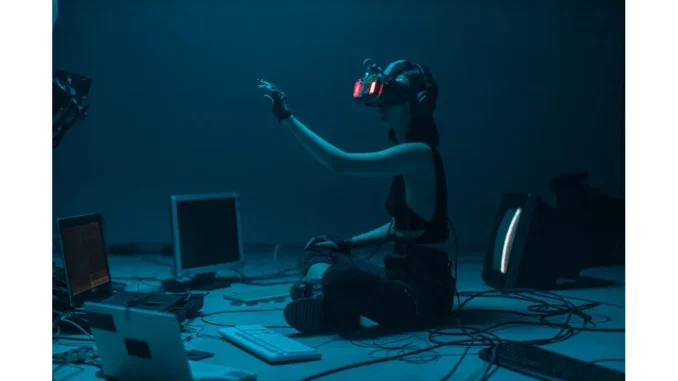
In recent years, the landscape of mental health treatment has been undergoing a profound transformation, led in large part by technological advancements. Among these innovations, the integration of augmented reality (AR) and artificial intelligence (AI) into the treatment of post-traumatic stress disorder (PTSD) stands out as particularly promising. Wayne State University School of Medicine is at the vanguard of this movement, with researchers developing a pioneering approach that utilises AR and AI to craft immersive therapeutic experiences for those grappling with PTSD.
Traditionally associated with the realms of gaming and entertainment, augmented reality is a technology that overlays digital information onto the real world. Its potential within therapeutic settings is now being realised, especially for exposure therapy in PTSD treatment. Exposure therapy traditionally involves confronting patients with trauma-related stimuli in a controlled environment, a process that historically relied on imagination or virtual reality. AR, however, offers a refined approach by integrating digital elements into real-world settings, thus creating a more authentic exposure experience.
Dr Arash Javanbakht, a leading figure in this research and a Professor of Psychiatry and Behavioral Neurosciences at Wayne State, focuses on a critical aspect of PTSD treatment: overcoming the avoidance of real-world environments. This avoidance often severely restricts patients’ ability to partake in everyday activities, such as grocery shopping or socialising. By employing AR, therapists can introduce feared objects or scenarios into the patient’s immediate environment, thereby facilitating a more genuine exposure therapy session. This method not only assists in confronting fears but also supports patients in gradually reclaiming their everyday lives.
The innovative technology at Wayne State goes beyond merely presenting virtual stimuli. It incorporates AI to enhance the realism and interactivity of therapeutic sessions. Sophisticated AI algorithms enable the creation of lifelike human characters capable of engaging with patients in varied and dynamic ways. This allows therapists to tailor exposure scenarios specifically to each patient’s needs and triggers, thus rendering the therapy more personalised and effective.
A notable advantage of utilising AR in PTSD treatment is its ability to facilitate safety learning within real-life contexts. Patients can practise coping mechanisms and safety behaviours in environments akin to their daily lives, improving the application of these skills outside therapy sessions. The wireless connection between the AR headset and the therapist’s computer further allows for real-time monitoring and adaptation of the therapy, ensuring it is consistently responsive to the patient’s progress.
The path to this technological innovation was fraught with challenges. Dr Javanbakht and his team navigated a complex web of innovation, from securing patents and funding to conducting clinical trials and engaging with industry experts. Their diligent efforts have resulted in a clinically viable product that is already making tangible improvements in patients’ lives. Feedback from early adopters, including female police officers and a male firefighter with PTSD, has been invaluable in refining the technology. Their insights have ensured that the AR experiences are not only realistic but also sensitive to the unique experiences and needs of frontline workers.
Looking to the future, the potential applications of AR and AI-enhanced therapy extend well beyond PTSD. As the technology continues to evolve, it holds the potential to become a mainstay in mental health clinics worldwide, setting a new standard of care that is both innovative and effective. Dr Javanbakht envisions widespread adoption of this technology, offering hope and healing to patients who have long contended with the debilitating effects of trauma.
The integration of augmented reality and artificial intelligence into PTSD treatment marks a significant advancement in mental health care. By creating immersive, real-world therapy experiences, researchers at Wayne State University are not only progressing the field of psychiatry but also providing much-needed support and hope to those in need. As this technology gains momentum, it promises to revolutionise mental health treatment, offering new avenues for healing and recovery.


Be the first to comment